
Interesting Articles
In today’s world of powerful technology, many people feel the urge to simplify and get back to nature.
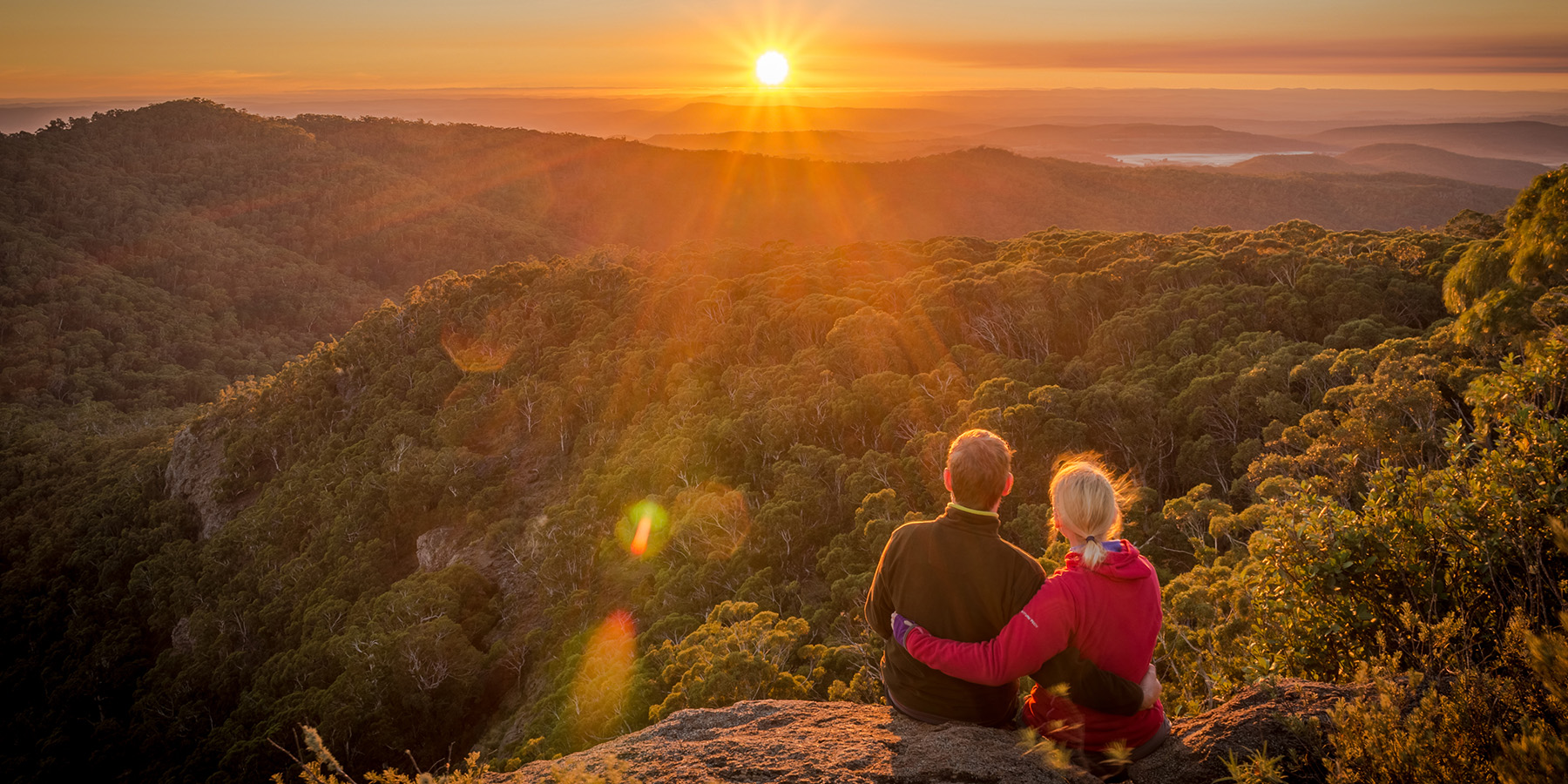
In today’s world of powerful technology, many people feel the urge to simplify and get back to nature. To experience the health benefits of outdoor recreation, it’s necessary to unplug and recharge in the wilderness. Those who are able to soak up everything nature has to offer find out why being outside is important—it comes down to health.
Long before smartphones and self-driving cars, Japan deemed “forest bathing” an essential part of its national health program. With forest bathing, the soaking isn’t literal. Bathing takes on a new meaning—immersing yourself in the natural environment.
The concept stems from Japanese Shinrin-Yoku Forest Therapy, and goes back to 1982. Over three decades later, the goal of forest bathing is still to reintroduce people to the healing power of nature. Much study and research has confirmed what the Japanese have long believed—nature benefits wellbeing in many ways.
The popularity of forest bathing has risen in the United States, particularly in metropolitan areas. Individuals, families, and friends have taken to the woods together for therapeutic hikes and nature walks. But forest bathing isn’t the only thing you can use the outdoors to improve your wellbeing.
There are so many ways you can take advantage of the benefits of nature. We’ll leave the how to you—hint: it starts with putting down your phone and experiencing the outdoors. We’ll supply the why. Here are 10 reasons why being outside is important to improving the health of you and your family.
1. Relieve Stress
Getting outside can help you escape the stress of work or school. Stress can tear up a healthy mind and immune system. High levels of stress at work and school are associated with depression, obesity, and high blood pressure. Stress is unhealthy when not managed properly. Luckily, there is a natural stress reliever right in your backyard.
Spending time in nature relieves stress in teens and adults. Bloodstream levels of the stress hormone cortisol are lowered after time spent outside. For a group of male students in China, those who spent their break from school hiking and camping returned with lower cortisol levels than those who spent time in the city. And these lower cortisol levels persisted for several days after their retreat to the wilderness.
The results suggest regular trips outdoors are a reliable way to manage stress. Experiences in nature are low cost and accessible to everyone. For the next long weekend, choose to spend time in nature over a trip to the city. You will reduce your stress load and return feeling rejuvenated.
Pro tip: Nature can help create more job satisfaction. Office workers with window views are more satisfied and less stressed at work. If you don’t have a window, take time every day to look outside and feel the stress-busting effects of nature views.
2. Strengthen Immunity
Staying indoors can have a negative impact on your immune health. The immune system works best when challenged regularly. That doesn’t happen when we spend time indoors.
Healthy doses of nature will help prepare your body fight. Here’s how it works.
A study published in 2010 evaluated the effect of forest bathing on immune function. For a group of Japanese adults, a three-day trip to the forest increased the number of white blood cells in their blood. These levels of white blood cells stayed elevated for more than 30 days after their adventure in the woods. White blood cells are crucial to your immune system. They help your body battle germs by recognizing pathogens and harmful intruders with the help of antibodies.
The boost in immunity from a trip into nature can help keep you feeling healthy. For active adults and growing children, increased immunity is a valuable asset in a healthy lifestyle. Strengthening your body’s natural germ-fighting power with a regular trip into the wild.
3. Sharpen Your Focus
In the general population, studies have shown that attention is almost uniformly enhanced by exposure to natural environments. A study published in 2009 found that the same holds true for children with attention deficits. Spending twenty minutes walking in a nearby park was sufficient enough to elevate attention performance in children with ADHD. This so-called “dose of nature” could prove to be a more natural solution to attention deficits in children.
The same effects can be seen in adult attention. Views of nature from an office window and breaks from work in the outdoors have both been shown to increase productivity and concentration.
For a significant boost in focus and creativity, escape to the woods for longer periods of time. Creative problem solving and cognitive function can be boosted by nearly 50 percent after spending several days exploring the outdoors. Wilderness retreats may help you tackle a big assignment or personal goal. If you’re still wondering why being outside is important, it can enhance your creativity.
4. Helps Develop a Healthier Diet
Looking for a hobby to get you outside? Gardening is a great way to increase your time outdoors. Not only does gardening keep you active, it provides you with access to healthy fruits and vegetables on a regular basis.
Outdoor recreation has long been associated with a healthy lifestyle. But being active in your garden also lets you can reap the healthy dietary rewards of your labor and get exercise at the same time.
Read more reasons why you can grow health in the garden.
5. Calm the Mind
Anxiety and depression can be crippling. Coping with mental illness is difficult and methods vary from person to person. Most physicians and therapists recommend regular exercise in addition to therapy and medication. Getting that recommended exercise outdoors can help ease emotional and mental pain while improving mood.
There are several physical responses our bodies have to being in nature. Sitting outside can reduce blood pressure, lower heart rate, and decrease cortisol levels. When we are outside our body slows down, helping us feel peaceful and calm.
Our minds work in a similar way. Spending time outside improves mood and reduces feelings of anxiety. We can focus better in nature, and our improved concentration can help us address feelings of stress and anxiety. Self-esteem can also receive a boost after time spent wandering outdoors.
Peace and mental clarity is a big reason why being outside is important. Find it by adding time in nature to your mental healthcare regimen.
6. Aids in Weight Management
Nature offers beautiful views and fresh air, so choose an exercise regimen that will get you outside. Research at the Center for Disease Control and Prevention found that more than one third of American adults are obese.
Exercise and proper diet are the two most effective ways to stop the spread of obesity. You can burn 149 calories each half hour of walking in the park, and 372 calories every half hour by riding your bike. To encourage kids to get exercise outside, find a fun activity to do as a family. Increase your time walking, biking, running, and playing outside and lower your risk of obesity. Take your exercise outside the gym and enjoy all the health benefits nature has to offer.
7. Better Your Short-Term Memory
Nature could be the answer to remembering names, not forgetting your keys, and taking better notes in class. There is growing evidence that both short-term and working memory can be improved by time spent outside.
At the University of Michigan, a simple experiment backed this theory. Two groups of students were given a memory test and then assigned to take a walk through a garden or down a city street. After their walks, the participants performed the memory test again. Those who walked through the garden improved their scores by 20 percent. No consistent improvement was observed in the participants who walked in the city.
Natural scenery and garden views calm our minds and help us focus. Urban settings are full of traffic, street noise, lights, and lots of people. These things pull our attention in several directions. This makes it hard to sharpen our focus and recall things we just learned. Pondering new information in a peaceful, natural setting may help enhance your short-term memory.
8. Improve Vision
Your eyes provide another reason why being outside is important. A study following Australian school children linked time spent outside and better vision. Of the 2,000 children followed during the study, those who spent more time playing outside significantly reduced their risk of becoming nearsighted. This suggests that outdoor activity has a protective effect on the eyes of children.
These results are striking because the same was not observed in children who spent time playing indoor sports. Being outside in fresh air and sunlight protects growing eyes more than equal physical activity indoors.
Dim indoor lighting makes it difficult for young eyes to focus on an image. This causes the eye to change shape in order to see clearly. The ample light of the outdoors keeps kid’s eyes from working harder than they need to. So when encouraging play time and exercise, take the fun outside and protect your child’s eye health.
9. Fight Nature Deficit Disorder
We’re spending more time inside than ever before. Computers, tablets, cell phones, and video games hog our attention and keep us from getting into nature. That’s especially bad for our children.
Playing outside encourages kid’s creativity, builds their attention spans, and increases their desire to explore. The book Last Child in the Woods: Saving Our Children from Nature-Deficit Disorder by Richard Louv outlines this growing pattern. Louv coined the term nature-deficit disorder to explain what happens when kids spend too much time indoors.
Recent findings show children ages 8-18 spend more than six hours each day with electronic media. A study published in 2002 found that 8-year-old children could better identify Pokémon characters than plants or animals in their neighborhoods. As children spend less time outside, unhealthy habits begin to form.
Children who spend little time outside are at risk for developing chronic health problems. Diabetes, hypertension, obesity, and depression are common companions of a sedentary indoor lifestyle. Help your family learn healthy habits and encourage playing outside over electronic devices.
10. Increase Longevity
A 2015 study followed 108,630 American women to determine the relationship between nature and longevity. Women who lived near parks, lawns, trees, and forests had significantly lower mortality than women living far from nature. The results held regardless of urban or rural settings.
The longer life expectancy associated with living near vegetation could be caused by several factors. Air quality is known to increase longevity and is better in areas of more dense vegetation. Being close to parks and nature trails can encourage more frequent exercise, which helps maintain heart health. Time spent outside also increases social engagement and can improve mental health.
Whatever the exact cause, getting outdoors will help you live happier and longer—and that’s the ultimate reason why being outside is important. So, when establishing a place to live, pick a location where you and your family have regular access to nature.
Get Healthy, Get Outdoors
Find time today to venture outside and take advantage of the health benefits of the outdoors. Replace time spent inside on electronic devices with a bike ride or a walk to a local park. Take up forest bathing or gardening as a new hobby. And remember outdoor recreation can be enjoyed alone or as a family.
There’s no wrong way to get outside and so much to be gained by exploring the natural world. You know why being outside is important. It’s time to reconnect with nature. Your body and mind will thank you for it later.
Source
Sydney Sprouse
Ask the Scientists
An important aspect of friluftsliv is to find joy in every season, even the darkest and coldest time of the year.

In Sweden, parents bring their babies outside to nap in the open air, all year round. In Norway, Sundays are reserved for family time outdoors: hiking, cross-country skiing or taking a trip to a cabin in the country. And in Finland, the long-held tradition of roaming and foraging in the forest helps shape children’s identity for life. All are examples of friluftsliv, the age-old Nordic custom of connecting with nature in everyday life — a custom that profoundly shapes family life on these latitudes.
The term friluftsliv lacks an equivalent in the English language but is colloquially translated to “open-air life.” The Norwegian government defines friluftsliv as embracing nature and enjoying the outdoors as a way of life, saying, “friluftsliv offers the possibility of recreation, rejuvenation and restoring balance among living things.” Others describe it as living a simple life or a way of returning to our true home, nature. I like to think of friluftsliv as the outdoorsy cousin of hygge, the Danish concept of cozying up together with loved ones.
Friluftsliv is focused on simple ways to explore nearby nature areas and find joy in being outside, regardless of the weather or season.
What sets friluftsliv apart from many other forms of outdoor recreation is that it’s non-motorized, non-competitive and typically doesn’t require a lot of money or equipment. Instead, it’s focused on simple ways to explore nearby nature areas and find joy in being outside, regardless of the weather or season. While it usually involves learning basic outdoor skills, it doesn’t require you to be an expert or hardcore adventurer, just to have a genuine curiosity and interest in the natural world. More than a set of activities, friluftsliv is a culturally learned rhythm that revolves around feeling oneness with nature and is passed down from one generation to the next through direct experience.
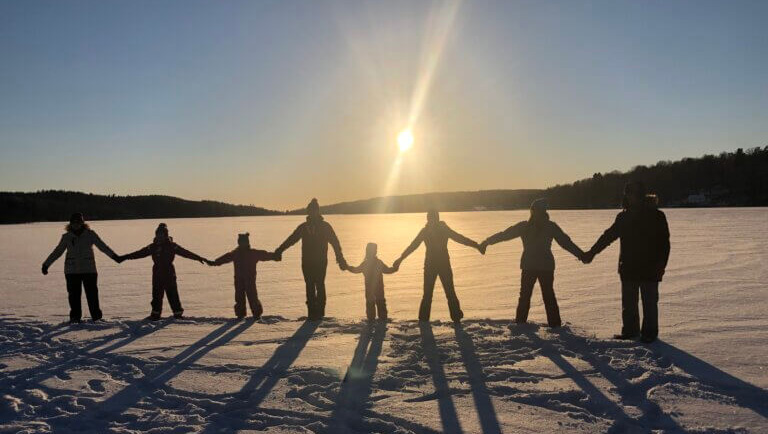
In the Nordic countries, the age-old custom of friluftsliv is a common way to build family culture.
Having grown up in Sweden, the adults in my life ensured that I acquired the friluftsliv culture just as seamlessly as I acquired language. My parents took me on countless walks in the forest behind our house, taught me how to swim in the lake nearby, and introduced me to skiing and camping. By the same token, my grandparents made sure I got to visit every park, nature preserve and historical site within a two-hour drive, nurturing my sense of wonder and appreciation for the natural and cultural landscape where I was raised. Our forays outdoors also strengthened my connection with my caregivers and shaped our entire family culture.
Family culture consists of all the values, beliefs, traditions and customs that are passed down to us from the people to whom we’re related. When I take my daughters outside to build snowball lanterns in the winter, just like my grandmother did with me, it’s an example of our family culture. So is my insistence that we go outside every day, echoing my mom’s often repeated mantra that “there’s no such thing as bad weather, only bad clothing!” And I’m pretty sure I never would have learned to appreciate the annual return of the migratory birds in our neighborhood if I hadn’t taken part in my grandfather’s keen backyard bird-feeding operation.
According to American environmental psychologist Louise Chawla, who has studied the friluftsliv lifestyle in Norway, a family culture based on open-air living can help strengthen emotional bonds both to the land and loved ones. “The very fact that a parent or grandparent chose to take the child with them to a place where they themselves found fascination and pleasure, to share what engaged them there, suggests not only care for the natural world, but equally, care for the child,” she writes.

Journalist & author Linda McGurk with her daughters Nora and Maya. (Evelina Lind)
Outdoors, there are fewer distractions from digital devices and plenty of time and space for everybody to be seen and heard. Unlike most extracurricular activities that children are involved in today, a friluftsliv lifestyle engages the entire family, including the elderly, which fosters togetherness and learning across generations. It can also strengthen the group dynamic as you problem-solve challenges together.
As I write in my book “The Open-Air Life: Discover the Nordic Art of Friluftsliv and Embrace Nature Every Day,” about hiking with my daughters, “In nature, there was no room for selfishness; we must all pull in the same direction and contribute to the greater good of the group. We pushed one another’s buttons on the trail for sure, maybe even more than normal. But we also seemed more tuned into each other. We worked harder, played more, and laughed often.”
While there are many benefits of letting children explore nature independently through free play, the friluftsliv tradition holds that older generations also have an important role to play in terms of leading by example. Firstly, many outdoor skills, from building a campfire to going to the bathroom in the open air, are best learned through socialization. Secondly, Chawla suggests that when a parent or grandparent observes nature in a respectful way — which is a cornerstone of the friluftsliv tradition — it communicates that nature is valuable and encourages the child to adopt the same values.
When a parent or grandparent observes nature in a respectful way… it communicates that nature is valuable.
A 2021 study from Singapore echoes Chawla’s findings, concluding that if spending time with family and friends in nature were to become a social norm, it would help strengthen people’s nature connection and environmentally protective attitudes. This, in turn, will be crucial to attain broad support for conservation policies that are needed to combat climate change and other global crises, especially since children who grow up practicing friluftsliv are more likely to pass on the philosophy to their own offspring.
The Nordic countries have some unique circumstances that make them ideal for fostering a family culture under the open skies. Natural areas in the region are both abundant and easily accessible, and friluftsliv enjoys strong institutional support. Still, the philosophy can be adopted and practiced by families just about anywhere with some greenspace. Our yearning for nature is universal and so is our need to connect with loved ones. By living life the friluftsliv way, we amplify the benefits of both.
Source
Linda Åkeson McGurk (Author & Photographer)
Children & Nature Network
Science shows that spending time in the great outdoors can actually make you healthier.
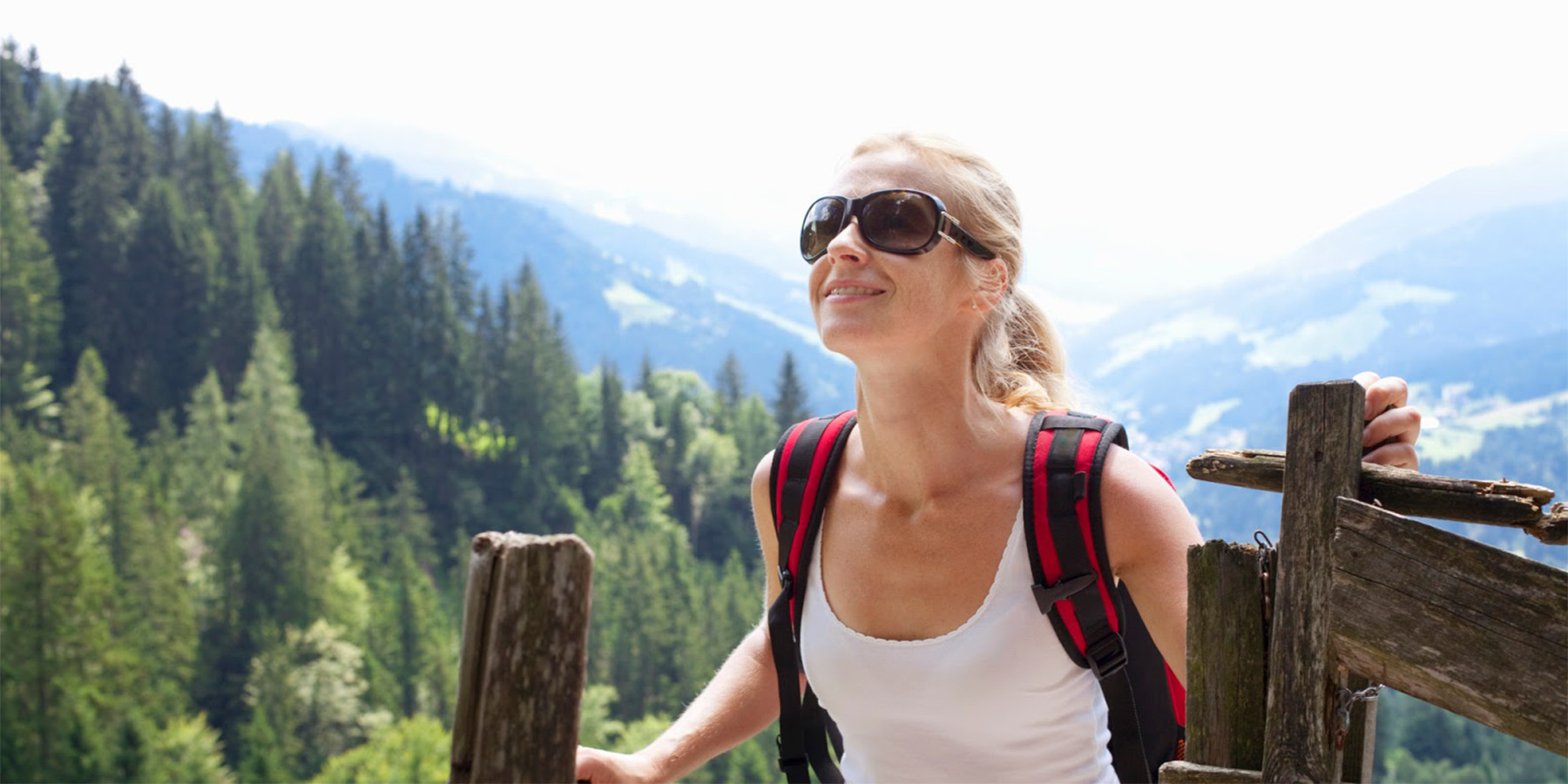
Summer is here, and we’re all for burgers, ocean breezes and an ice cream cone or two. But getting outside is about more than beaches and barbecues. Science shows that spending time in the great outdoors can actually make you healthier. Escaping to the woods, mountains or even your neighborhood park helps both your body and your brain.
Here are seven ways the outdoors make us healthier.
Getting outside makes exercise easier.
Research conducted at the University of Essex showed that the color green, such as that found on trees, grass and other plants in nature, makes exercise feel easier. The small study tested cyclists pedaling in front of green, gray and red images. Those exercising in front of the green showed less mood disturbances and reported that they felt lower exertion during their cycling. Plus, other research showed that those who exercise outside are more eager to return for a future workout than those who stick to the gym.
It can spur weight loss.
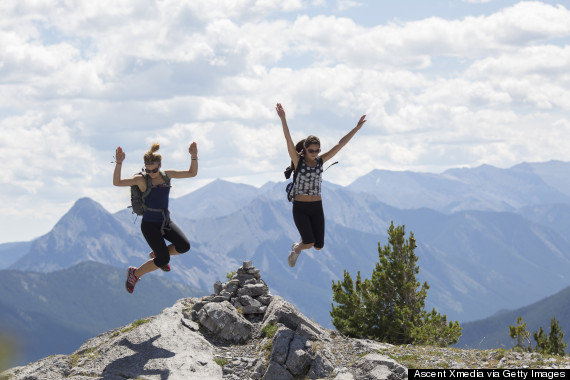
When John Muir wrote, “Climb the mountains and get their good tidings” in the Mountains of California, we kind of doubt he was talking about dropping a few pounds. But as it turns out, not only are the outdoors great for making exercise feel easier and often more enjoyable, but some outdoor elements — like those mountains — directly contribute to weight loss. Simply spending time at high altitude could help shed some pounds, even if you’re just visiting. The higher heights can speed up your metabolism, while actually lessening hunger cravings. So go ahead and plan those mountain escapes, hiking adventures and ski trip getaways.
Nature increases brain function.
Taking in a bit of nature can help your brain in more than one way. For starters, logging outdoor hours may increase concentration skills. One study compared concentration between children with ADHD who played outside, versus those who played inside, after school and on weekends. Kids who spent time in green, outdoor spaces reported fewer symptoms of ADHD, even when the exact same activities were compared.
Taking a stroll can also increase creativity. Research published in the Journal of Experimental Psychology found that walking increases creative production. And while walking anywhere — whether through the woods or in a mall — is beneficial in that it prompts creativity, researchers found that the actual act of spending time outside also influences novelty.
Plus, all of that fresh air is a quick way to kick your brain into high gear. Ditch the caffeine and stick to a walk in the park. Some say that 20 minutes outside can wake you up just as much as one cup of coffee can.
It amps up vitamin D intake.
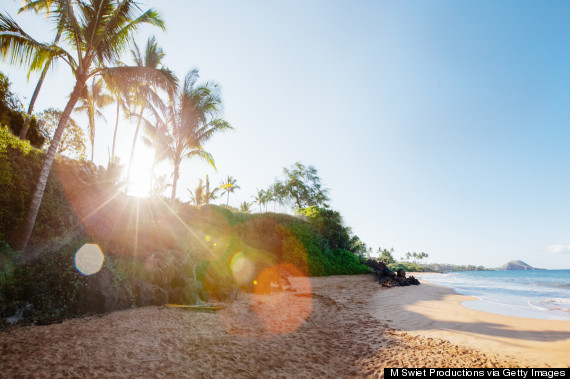
Vitamin D can be a tricky nutrient to get enough of strictly from foods, because so few naturally carry it, so most of us soak up between 80 to 90 percent of our sunshine vitamin from those golden rays, Dr. Michael F. Holick, M.D., Ph.D. tells The Huffington Post in an article on vitamin D deficiency. And while we all know to protect ourselves from the sun to avoid skin cancer, we also need vitamin D for bone growth, cell growth, inflammation reduction and neuromuscular and immune function. Unfortunately, your skin can only drink in the D from unprotected exposure. That’s why Holick suggests what he calls “sensible sun exposure.” That means only going out in the sun for about one third to one half of the amount of time it would take your skin to mildly burn, or roughly 10 to 15 minutes for many. After you’ve gotten a bit of vitamin D, reach for the sunscreen, grease up and continue your exploration of the great outdoors.
The outdoors may even help us age gracefully.
Research published in the Journal of Aging Health shows that getting outside on a daily basis may help older people stay healthy and functioning longer. Participants in the study who spent time outdoors every day at age 70 showed fewer complaints of aching bones or sleep problems, among other health-related problems, at age 77 than those who did not head outside each day.
Outdoor activities that revolve around group-oriented exercises or hobbies have their own benefits for older people. Research shows that gardening can help dementia and stroke patients improve social skills and confidence, while even increasing mobility and dexterity.
Nature is great for stress-reduction.
Spending time in nature has been shown to lower stress levels, Seattle-based environmental psychologist Judith Heerwagon tells The Huffington Post. “Just looking at a garden or trees or going for a walk, even if it’s in your own neighborhood, reduces stress,” she says. “I don’t think anyone understands why, but there’s something about being in a natural setting that shows clear evidence of stress reduction, including physiological evidence — like lower heart rate.”
One reason Mother Nature may work as such a great stress-buster is through scent. The smell of many flowers, including jasmine, lilacs and roses, have been proven to decrease stress and increase relaxation. The scent of fresh pine has even been shown to lower depression and anxiety.

The outdoors make us happy.
In addition to helping decrease stress levels, spending more time with nature shows a shift toward more positive moods, says Heerwagon. While we don’t know exactly why this happens in our bodies, “the theory is that we respond positively to things that are good for us,” she tells The Huffington Post. “Trees offer shade, protection and often have fruits and nuts, so they are a source of food as well as protection and comfort.” The idea is that we like things that are inherently good for us and our survival, which is why trees and other natural elements can help lift our moods.
Source
Abigail Wise
HUFFPOST
New surfing program at Perth Children’s Hospital
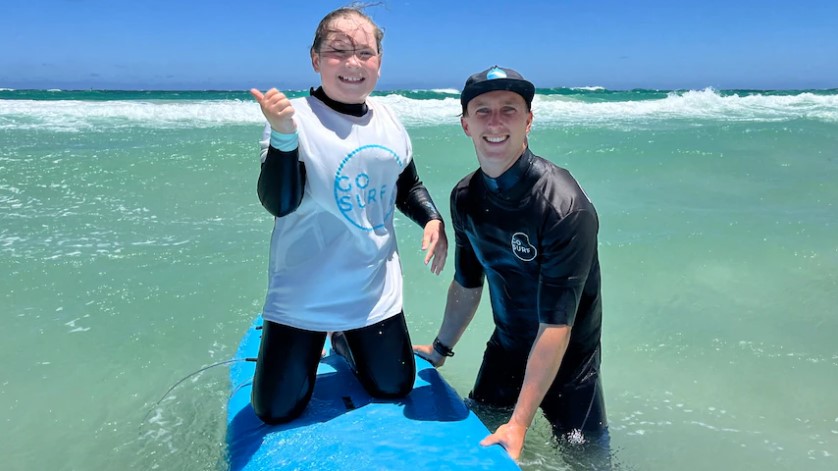
Ruby has been learning to surf to help with her recovery from burns she sustained at the age of four. (ABC Perth: Jackson Worthington)
Children with chronic health conditions can spend a lot of time in hospital, but in WA a new program is trying to change that by giving them a dose of surf, sun, and fresh air.
Nine-year-old Ruby Taylor is one of the first patients to go through the program at the Perth Children’s Hospital (PCH), which involves teaching kids to surf to boost their physical and mental health.
The program has been put in place permanently after a pilot for children with cystic fibrosis found surfing had positive outcomes for patients.
Children and adolescents with type 1 diabetes, cystic fibrosis, burn injuries, arthritis, and post-sarcoma injuries can take part in the new program.
Ruby has undergone more than 20 surgeries since the age of four when she was seriously burnt after trying to get something out of the microwave.
The surf lessons have acted as a form of physical therapy, which means she does not have to spend so much time in hospital.
Each time … I do the treatment, it gets better,” she said.

Key points:
- Children with chronic conditions can learn to surf through a new program at the Perth Children’s Hospital
- The surf sessions are personalised to cater to participants’ needs
- For Ruby Taylor, nine, the sessions aid her recovery from serious burns
Asha Taylor, Ruby’s mum, has noticed how the surf lessons have also helped the family through Ruby’s recovery.
She said regular hospital days involved lots of stress and visits to different doctors.
“It doesn’t matter how many surgeries she has, she still has the nervousness of going to the hospital and knowing the pain she is going to endure,” Ms Taylor said.
“Whereas coming down to the beach … it’s a super exciting experience for her.
She loves being down here, she loves the instructors, [and] she gets to stretch all of her skin and bones and get the exact same exercise she would at the hospital.
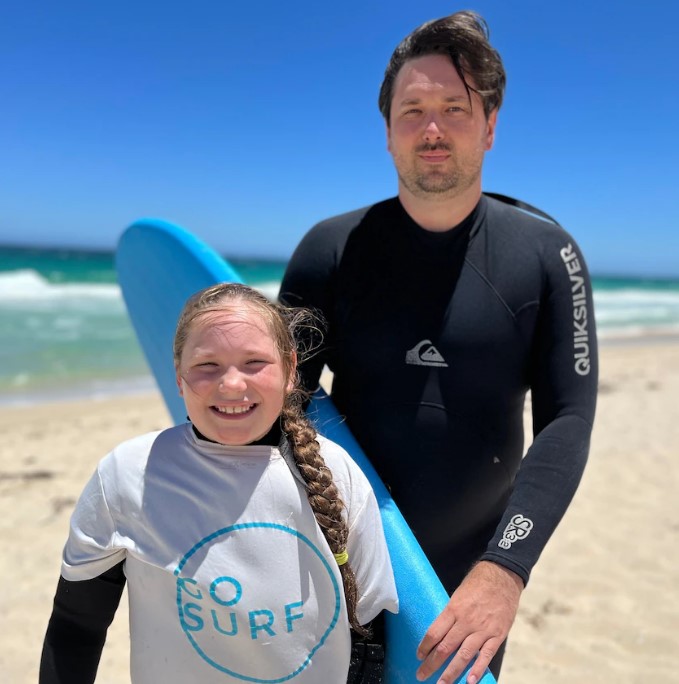
Family joins in fun
Ruby’s dad, Alex, is also part of the lessons.
Ms Taylor said having family members take part made the treatment easier for Ruby.
“It’s very segregated in a hospital setting,” she said.
“We have to leave our younger daughter at home when we go to the hospital [but] at the beach, she’s down here, we’re all down here as a family.
“Ruby gets to show her skills because she’s better than my husband, so she’s very excited about [that].”
The surfing program started after PCH senior clinical psychologist Joanna White taught herself to surf.
She said the early pilot program had also shown great benefits for patients with cystic fibrosis.
There’s a lot of emerging evidence about how the ocean … can actually make you feel good and give you a sense of wellbeing,” Ms White said.
“But surfing, even on top of that, is fun, it’s playful, it’s exciting, it tests your limits at times, and helps you to face your fears.”
Ms White said it was great to watch the families gain confidence with the help of the instructors.
She said patients worked with the same instructor to build a therapeutic relationship and meet their treatment goals.
“One of the things for kids with chronic conditions is that they’re often less likely — what we know from the research — to engage in team sports or physical activity for a number of reasons,” Ms White said.
So this is a way of tailoring it to each child and making sure that they feel OK about getting involved in activities and facilitating it.
“But surfing, even on top of that, is fun, it’s playful, it’s exciting, it tests your limits at times, and helps you to face your fears.”
Ms White said it was great to watch the families gain confidence with the help of the instructors.
She said patients worked with the same instructor to build a therapeutic relationship and meet their treatment goals.
“One of the things for kids with chronic conditions is that they’re often less likely — what we know from the research — to engage in team sports or physical activity for a number of reasons,” Ms White said.
“So this is a way of tailoring it to each child and making sure that they feel OK about getting involved in activities and facilitating it.”

Surf instructor Harley Waddell has been working with Ruby through her treatment.
He said it was rewarding to watch her gain confidence in the water.
“We want them to have fun,” Mr Waddell said.
“As long as the kids are out there having fun, enjoying themselves, they’re getting out of home [and] getting out of the harsh reality of what their lives can be.
As long as they’re smiling by the end of it, we’re pretty happy about it.
Source
Jackson Worthington
ABC News
Case Studies
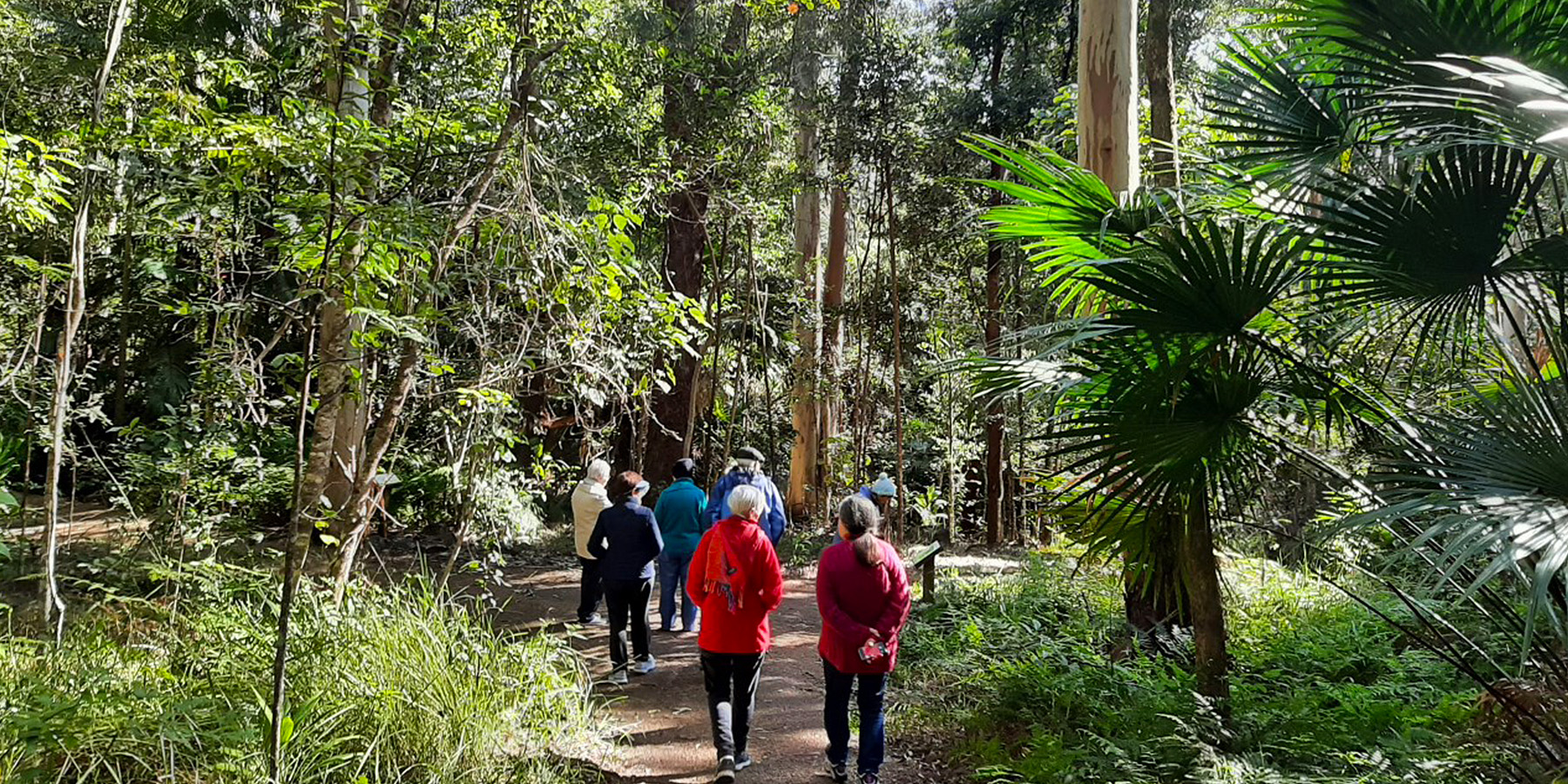
Remember the joy of walking on damp earth, the smell of eucalypt trees wafting, a kookaburra’s laugh causing an involuntary smile to curl upon your lips? In a digital world, forest bathing offers restorative connectivity for health and well-being for all the family. Jay Ridgewell from Held Outside runs guided nature therapy sessions for all ages. Today we briefly speak with Jay to learn more about how families can become involved.
How did you come to create Held Outside?
Jay: I’ve always loved learning about the world and sharing this with others, so I spent about ten years in the field of science communication and education. I first heard about nature connection while trying to understand the widespread denial about the climate and extinction crises. I learnt about how spending time in nature is proven to be good for us, how we call all build our connection to nature through practices such as forest therapy, and how strengthening those relationships is good for the Earth too. Then I did a forest bathing walk, and it just made sense. So now I’m working on my own relationship with nature, and guiding others on nature therapy walks and nature connection courses through Held Outside.
What are the benefits of Forest Bathing
Jay: When you’re immersed in the forest, it’s easy to realise that there’s so much value in getting out of our heads and noticing how our bodies feel. The research from cardiologists, immunologists, psychologists and more backs this up. Being slow in nature slows down our bodies into the ‘rest and digest’ parasympathetic nervous system. We can also get a sense of awe, beauty in imperfection and a greater perspective on things.
If I were to book in, what could I expect to do?
Jay: On a walk with me, you’ll learn about the forest that we’re in, and we acknowledge country and get introduced to the group. Then we move into getting to know the forest through our own senses. These are invitational activities, so it’s totally ok to be doing something different to the person near you, or to just sit and chill for a moment. The invitations can be quiet and peaceful or sometimes playful and social. We finish with a little picnic tea ritual.
Do you have a special story that you would like to share?
Jay: Last year I was guiding a group of retirees through a local forest. After just the first half an hour of a forest bathing walk, one lady commented “I have been bushwalking and camping in Australia all my life, and I think this is the first time I have ever truly noticed the bush”.
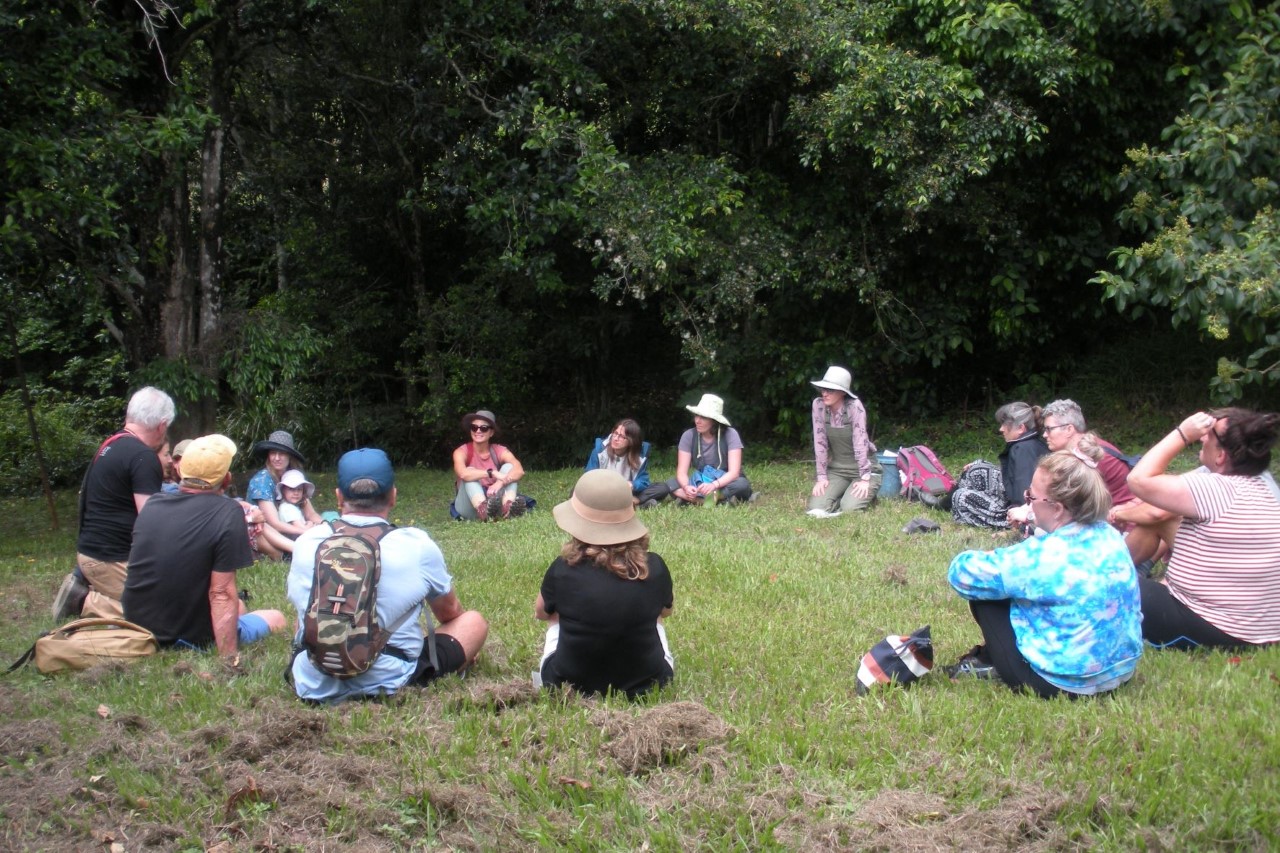
Once people have completed a session, is there ongoing social groups or ways that people can continue?
Jay: Each guided walk – even if it’s in the same forest at the same time of day, and even with the same group of people – is different, because the forest changes minute to minute (and so do we!). I try and keep my walks affordable and offer discounts to those who’ve been along before so that once participants have been along, they know that they’re welcome to keep coming! It’s great to have your own personal sit spot or forest bathing practice, but doing it with a group just adds a whole other level. I’m planning on starting an ongoing nature connection group at the end of this year, where we can play around with others who don’t need so much introduction, and just want to get straight into the trees!
Take a leaf (pun intended) from Jay and make the time to forest bath and soak in natural magic for the soul!
On a calm and overcast day at Dohles Rocks, we had the heart-warming opportunity to speak with Sam (11 years) and his dad, Peter, about Sam’s love of the outdoors. Of particular interest was how the 2 Bent Rods fishing program has influenced his life so far.

Sam and Peter, how did Sam begin his fishing journey?
Peter: Sam was quite young when he started the first program, only 6 years old. We had checked out a few of the Council school holiday programs. The first few we tried weren’t for us but fishing seemed like a good idea. That’s where we came across Two Bent Rods. We started out at Redcliffe. After Sam did the holiday program, we signed up for a private 6 week course. Sam was given a free fishing rod with the course which meant we could go out after school and on weekends as well.
Sam: It was really easy to get started. Catching fish is so much fun. We use circular hooks that are better for the fish and less likely to hook you. We have hookies that are little plastic covers that allow you to bait safely. If the fish are on, Dad does the baiting while I catch them! Mum doesn’t like baiting but loves the charters. Somehow, she always lands the best fish of the day!
Peter: Both Jeremy and Samantha from 2 Bent Rods were fantastic. We had a lot of fun and felt like part of the family by the time the course finished. We found it very easy to continue and now attend every event we can. The events are inexpensive, and family focused. Those relationships make all the difference. I’m just like everyone else, it’s a bit scary to just turn up in a new environment with new people. Fishing is a very friendly sport, there is always someone ready for a chat and to offer a bit of advice.
What has fishing meant to both of you?
Peter: The amount of knowledge that Sam has at 11 years is incredible. He really understands the importance of environmental care. In fact, the environmental centre here at Dohles Rocks has been really great. They do so much to teach kids.
Sam: Samantha and Jeremy teach everyone about the importance of managing introduced species. The Tilapia that we catch is from Mozambique, it’s a fast fish but it is bad for our native fish. It’s really fun to catch and Samantha tells me I’m the King at it (big smile).
Peter: The way Sam has embraced teaching and leading others has really surprised me. He is so confident. He is currently going through the school captain leadership process. His lead in teaching other people about fishing and the environment is a great life skill.
Sam (smiling): Samantha and Jeremy say they can’t wait for me to turn 13 so I can start work with 2 Bent Rods. I can’t wait either.
Peter: Sam has also learnt patience and resilience. Waiting for over an hour for a bite, then losing it as it goes to the net. Also setting and reaching goals. Sam was dreaming and talking of catching a Giant Trevally, when he finally hooked one he spent 10 minutes fighting it with all of his might!
Sam: (Smiling broadly) Catching a GT is really cool. They are so powerful and it took a lot to get it in.
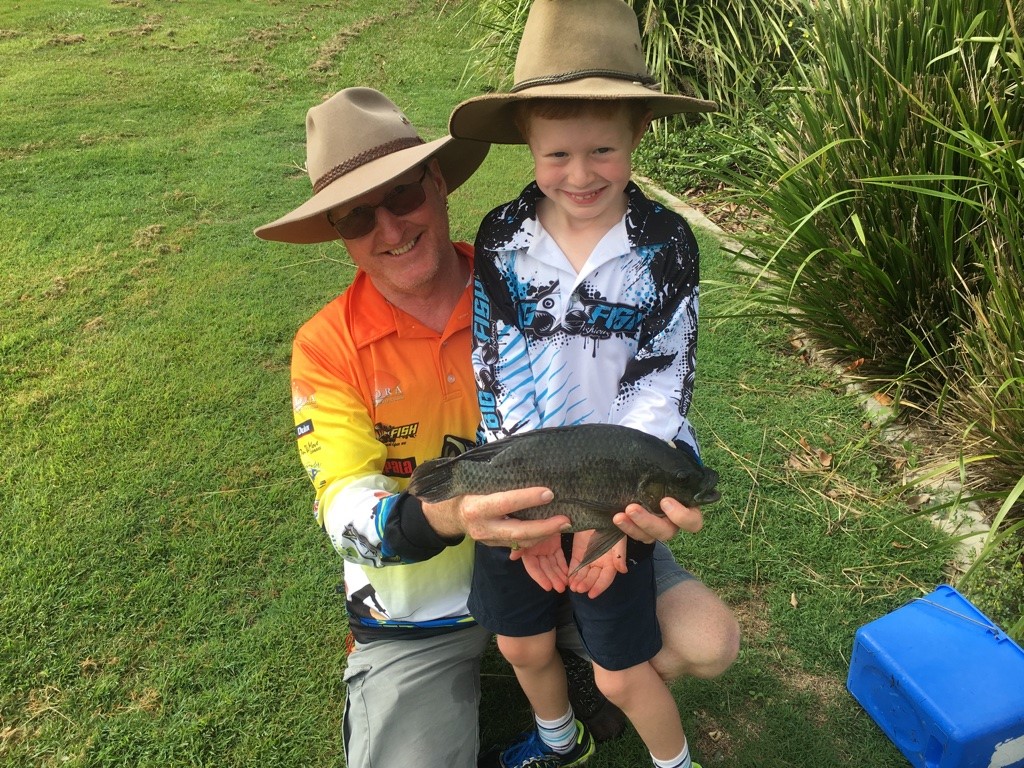
Sam are your friends and family into fishing too?
I did a fishing day for my birthday. I helped my friends learn how to bait and cast, we had so much fun, a really good day. I play a lot of handball and soccer with my friends too. I mostly fish with my family, especially Dad, and my 2 Bent Rods friends. My Grandparents fish with me too. When I fish with my grandparents, we fish for the introduces species in the little lake near their place. We catch up with other families fishing on holidays and at events.
What do you do with the fish, eat them?
Sam: The Tilapia that I like to catch most, has to be put in the bin or buried above the water line. I have ponds and tanks at home that I use for small fish that are legal to keep. I catch and release native fish.
Peter: Most of the time we buy our fish cooked. The place near us do a great job and it saves the smell from cooking. We do bring the fish home from the charters. They usually fillet it on the boat.
What’s next, a kayak, boat?
Sam: I won a kayak in a fishing competition; we’ve only used it a few times. A boat would be great! Peter: Due to my ill health I get too tuckered out to paddle. We hope to buy a boat. We enjoy being on or near the water. We loved our holiday on a houseboat, such a great family trip. We will just keep on enjoying this……….
At this point the pelicans swam by, a father and son smiled knowingly at each other as they waved to a fellow fisherman pulling into the boat ramp.
Ah! The serenity!
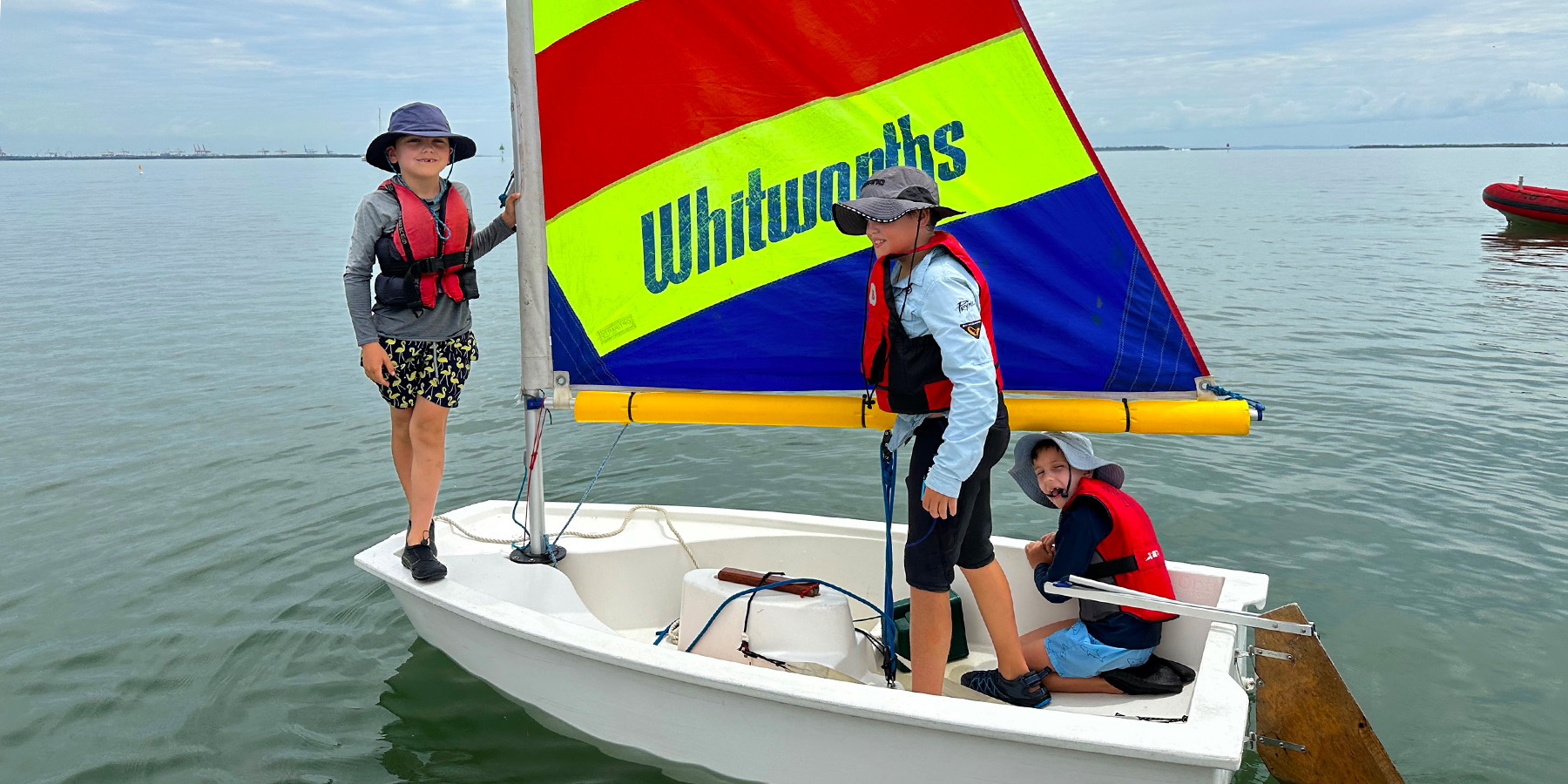
With Adrian Finglas, Head Coach RQYS.
A small sailing dingy lands at the RQYS boat ramp, a child maybe 8 years old nimbly jumps out, secures the boat and rushes to grab the trolley to take the dingy up to the hosing off area. The boat is washed, put away and secured in no time. Parents take note, these skills alone make the RQYS sailing program worth every cent. Children of various ages repeat the process. Happy, responsible, resilient children with skills and connections to last a lifetime.
How does someone learn to sail?
- The first step is to contact the club. We have new programs beginning regularly for people of all ages
- “Tackers” is where most children start, this has progressive stages so children can continue to improve their skills. Coaching and racing is also available.
- “Out there sailing” is a national program for teenagers 12 – 17. It is designed to get young people out in boats having fun and learning how to sail responsibly.
- School holiday programs are always popular.
It’s a daunting thing to go out there, do you get wet on your first day?
- Maybe…. everyone loves it! Our instructors are young and fun-loving. All staff are well trained and ensure the area is clear, and that it is a safe environment. Our rescue craft are there to reassure. The terminology we use is “worst case scenario is you’ll get wet”.
Can anyone sail?
Yes, as long as someone has the agility to move around the boat they can sail. If agility is an issue, there are adaptive measures that can usually be used.
Do you have many families involved in the club? How many generations?
- It is very much a family activity, often parents learn after their children learn. We currently have a Sunday morning group of parents that are learning.
- Grandparents and even the occasional great-grandparents are involved particularly with the larger boats.
- The club hosts many family-friendly events and celebrations. Everyone is included.
- Even if people don’t have family here, people become part of the sailing tribe. We often see our young sailors benefit from their connections in the club when they seek mentors and employment opportunities.
What sort of cost is involved?
- Learn to sail is cheaper than babysitting. Entry level per hour very cheap. Less than tennis lessons. Tackers holiday program, all day, is $395 for the week.
- Equipment leasing is an option with junior level boats leased per term. Even to buy an Optimum boat isn’t overly expensive, around $1200.
- Like all sport, the higher the level the more expensive the equipment. Sponsorship for talented competitors may be an option.
What are the pathways for people to progress?
- People can choose how they sail, whether is it purely for leisure or competing at world level.
- Those who may not want to sail are included in the club. Our volunteers manage the safety boats, radios, and a host of valued positions.
- Careers in the yachting industry are vast and plentiful. From coaching tacker programs, being a part of a racing team, broker, to working as a superyacht captain.
What sort of skills can people expect to learn and how does that spill over to other aspects of life?
- Tactical thinking
- Planning – tides, weather etc
- Resilience – tip over
- Planning for safety,
- Maintenance of equipment
- Teamwork
- Listening to coach
- Independent thinkers, our participants become captains of their own ship, taking it on a journey they must plan for.
- They learn how to be aware of other traffic in the harbour, increase spatial awareness, the limits of craft, and the importance of safety. All youth that sail, ace getting their licence, as the driving skills are second nature. Even young children, young instructors and coaches, deal with motors, rules, safety planning when using the rescue power boats.
- Consequences of concentrating even when tired and uncomfortable.
- The diversity of the members create opportunity and understanding. Boaties can be anything from concreters and builders to barristers and high court judges. Exposure to all different walks of life is invaluable.
- Physical agility, healthy outdoor lifestyle is an obvious positive but the mental freedom the sport gives you is the best. It opens up the imagination for what is possible, particularly the interaction with dolphins, dugongs and other marine life. From a young age, our participants understand that they have incredible tropical islands within their reach.
Sail away, sail away…….
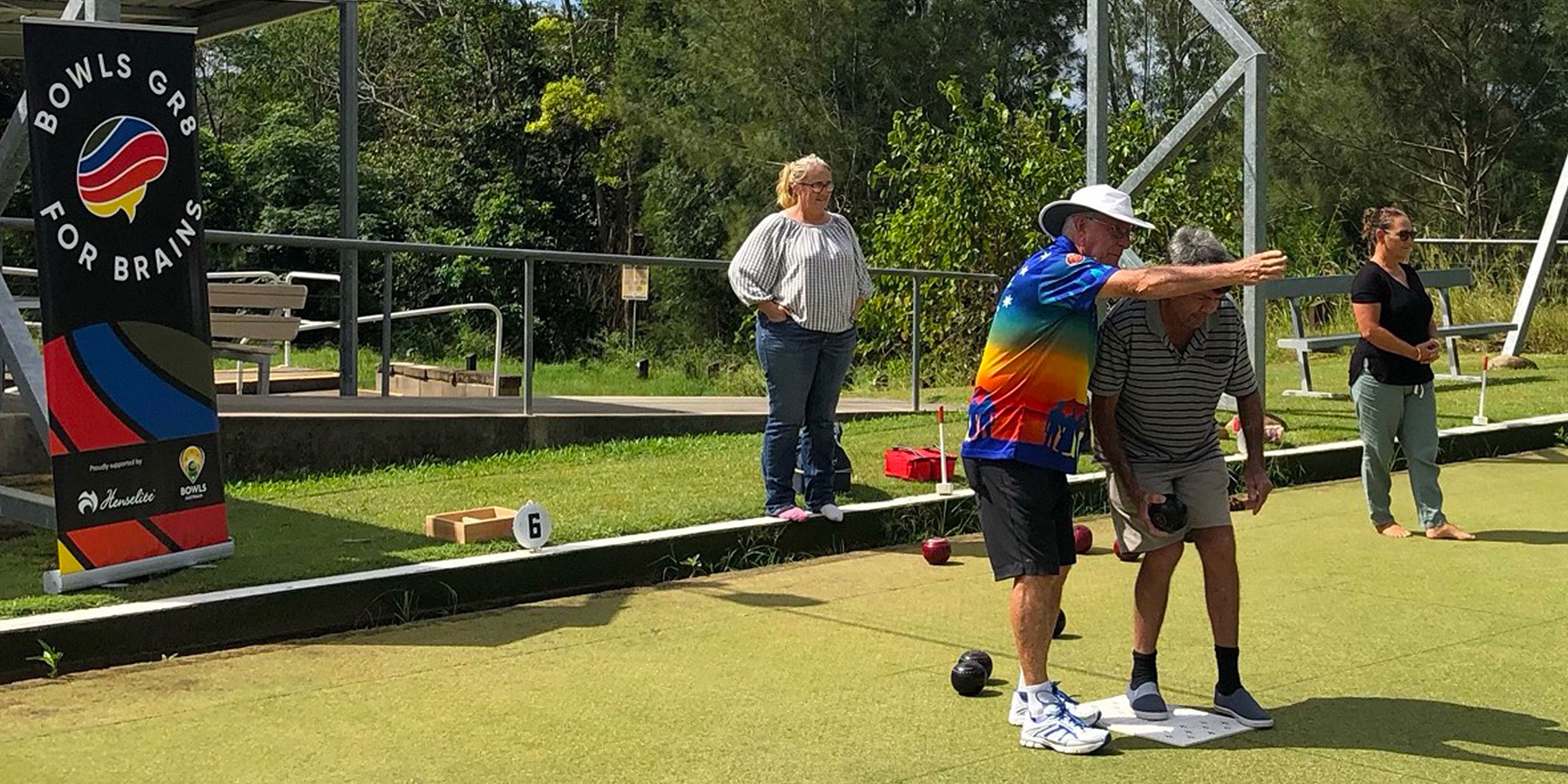
Interview with Balan Pillay
Albert Bowls Club – Gympie
Today’s local Bowlo offers much more than cheap beer and a place for older people to spend their days (aka Cracker Jack). Now family gatherings and social occasions are celebrated on the greens with barefoot bowls, competitions are played with teams of bowlers that can range from 8 – 80 (and beyond). A person in a wheelchair can play with their mates in a prized national competition, as can granddaughters and granddads.
The Albert Bowls Club’s synergy with Outdoors for Life philosophy is strong with programs including “learn to bowl”, schools programs, and Bowls Gr8 for Brains.
How does someone start?
Come in and say hello! There’s always someone ready for a roll-up. Anyone can book in for a game of barefoot bowls. It’s fun, easy to do and very social. Particularly when you use the wrong bias and fetch your bowl from the next rink. Barefoot Bowls is such a great way to socialise with everyone. Age, ability and gender are not a consideration. It’s a fun, outdoor activity, and the greens are always full of smiling people!
You mention smiling people, what is Bowls Gr8 for Brains?
Bowls Gr8 for Brains is a program focused on mental health and well-being. It originated as a program for people living with PTSD such as veterans and emergency services workers. The program offers a free opportunity for people to gather without any pressure or judgement. Trained volunteers are there to listen and chat. Today the program is available to anyone interested in improving their mental health and wellbeing, by being active outdoors in a supportive environment. Albert Bowling Club received great support from the community for the initial session and are looking forward to building the group.
Is lawn bowls really something people can do all their lives?
Yes! Albert Bowls Club are very committed to the junior programs. They are currently working with two high schools, James Nash and St Patricks Schools. Nearly 90 students are involved. The youth are aged between 14 -17 years. In the 4-week program they learn the fundamentals of Bowls. If students wish to continue, a junior program and junior academy is offered. Coaches are available to take the players right through to the elite levels. The schools’ programs are so important on several levels. The program teaches skills that the students will use for life. The bias creates new challenges that require a calm mind and controlled technique whilst the game requires tactical thinking. Even if the students don’t take up bowls at this time of their lives, they will have the fundamental skills to use as they get older.
What sort of pathways are available?
Bowls has so many options. There are social days and nights, casual roll ups and social competitions for those that just want to have some fun outdoors and meet new people. For those that want to progress, there are opportunities to play with state, national and international competitions. Bowls is a Commonwealth Games sport in which Australia does very well, particularly with our parasports team! There is some great prize money to play for as well! The Bowls Premier League is a professional, televised competition. As a career, the options are endless, including: greenkeeper, competition manager, coach, club manager, media guru, administrator and Regional Bowls Manager.
Speaking with Balan, it is obvious that the best “thing” about Bowls is the relationships that form at the club. Everyone belongs as a bowler, regardless of ability, gender, age or cultural background. There are unique opportunities for valuable transgenerational mentorships, not often created in our communities anymore.
This weekend, get outdoors for life and take the whole extended family to your local Bowlo!
By Fiona Coppin
Contemporary Business Development, Equity, Outdoors for Life Guidelines and Framework.
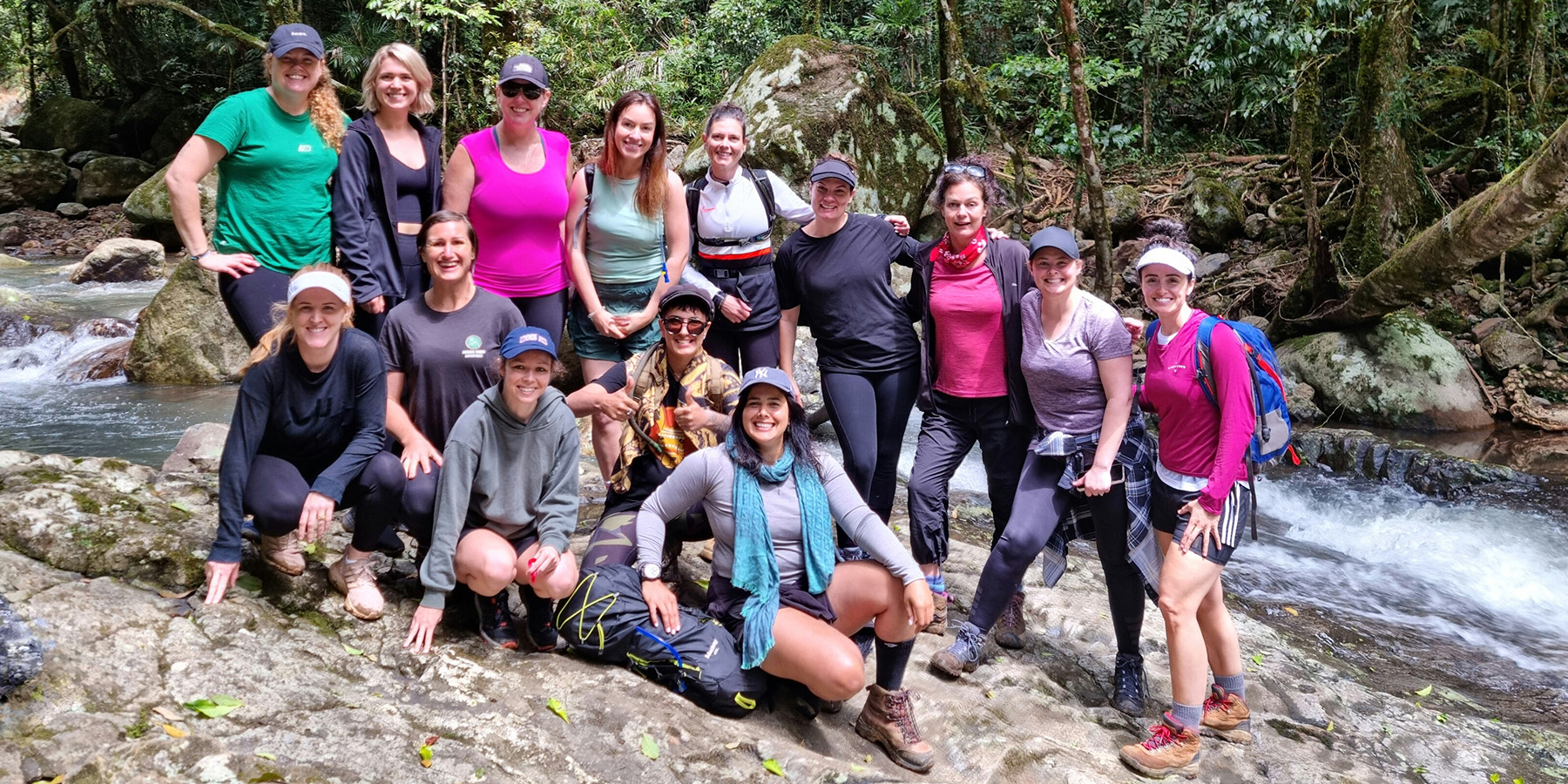
Arcadia Women’s Adventures, Founder, Tatiana, captures the hearts of all who meet her. Her warm and vibrant personality, along with her beautiful French accent, sweeps people into her fold. Regardless of whether she is showing you how to cook hearty vegetarian meals, physically pushing you up a mountain or dancing around a fire with you after your first ice bath, Tatiana ensures that everyone’s experience is positive, heart-felt and wanting more.
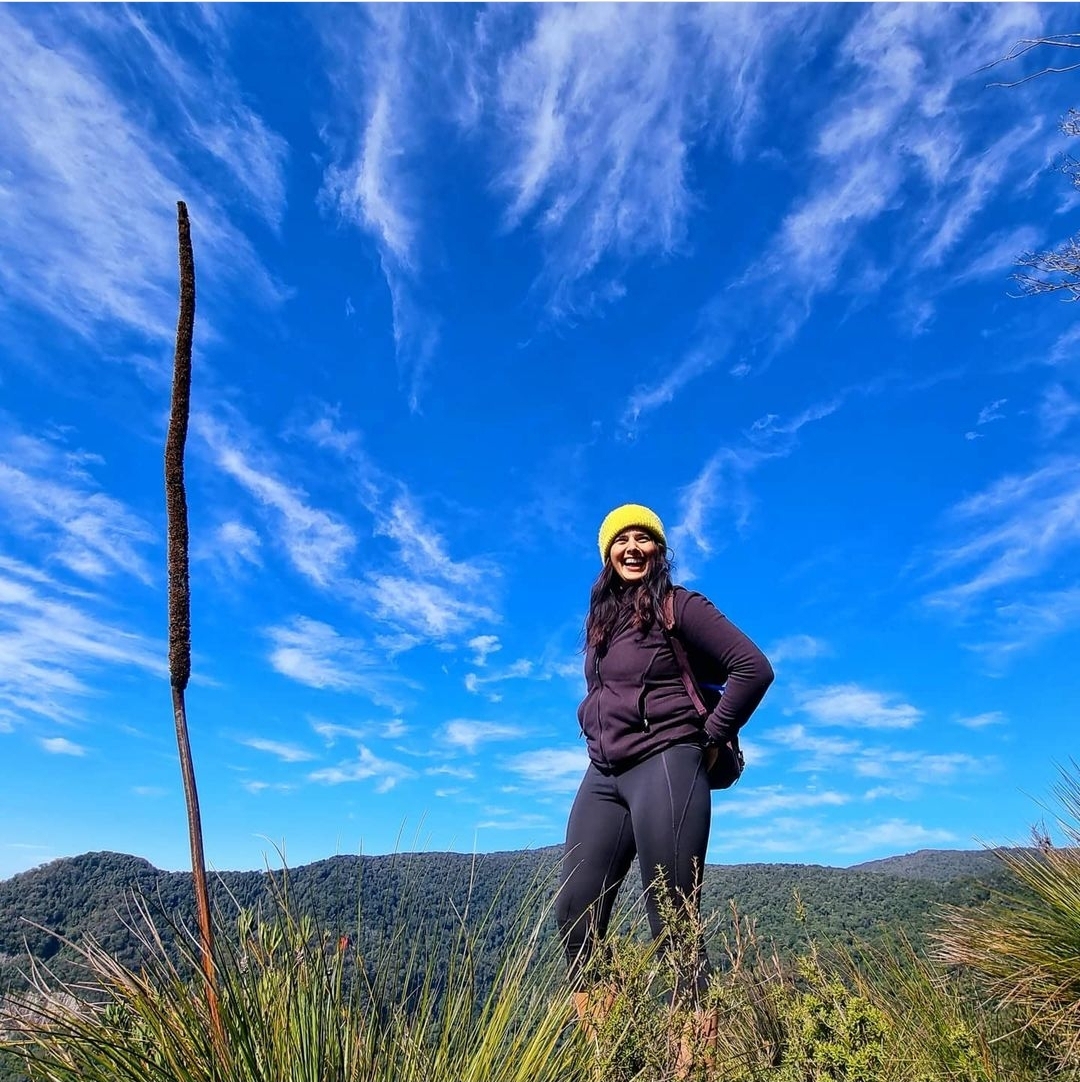
In 2021, Tatiana made the decision to follow her dreams and create opportunities for women to connect in harmony with nature. Community day hikes were the first step in a year marked with Covid lockdowns.
Empowering women to be all they can be is the essence of the Arcadia Women Adventures. The growth of the business and the services it offers have been significant. From where it started with community hikes, it has grown to now include weekend retreats, 10 day rafting trips and multi day hikes. The business is a great example of contemporary methods of business development.
Building of the Business
Brand Essence: “in harmony with nature”
Define the customer: women looking for a new challenge, connections with nature.
Marketing: Engagement of social media specialists, Instagram promotors, who share the brand concept. Facebook, Instagram, Group chats, Tik Tok. Diversity in imagery for age, culture, size. Focus on connection to nature and people. No makeup, natural looks, no staged photos.
Website development: Strong modern feminine focus with clear options for all levels of involvement. Less is more, the pictures and quotes do the talking, large easy to read fonts.
Team Building: Founder Tatiana had a dream to help other women enjoy and share in her love of being in nature. Speaking with others, Tatiana knew that women particularly wanted to feel safe, challenged and to have fun. Tatiana grew a team of like-minded professional and experienced women from the conception of Arcadia. The team now includes photographers, social media experts, brand advisors, outdoor education experts and guides.
The 5 step Outdoors for Life Guidelines are addressed in Arcadia Women’s Adventures below:
- Safe: Experienced, highly trained female guides, are engaged. Participants are taught the physical and safety skills they need prior to main activity. A focus on mental work creates mind-set preparation for more challenging activities. Continued care of body and soul at the end of the activities such as Yoga, nutrition and calming of mind sessions ensure quick recovery.
- Accessible: Transportation options offered for participants. Often in the form of a minibus. Differing options available depending on the ability of the person. Advice on supports such as walking sticks etc. available. Options from climbing mountains to paddling, surfing. Local to remote options offered.
- Inclusive: Arcadia Women’s Adventure offers options for all budgets. Shared room and tent options as well as private rooms. Community events continue to provide options for all women. All ages, abilities, and walks of life are warmly welcomed. Strong focus on developing friendships from a love of nature and feminine energy. Creation of opportunity for women to enjoy outdoors, even if family and friends don’t want to.
- Pathways: From community walks, weekend’s away that includes hikes, yoga and winery tours to 10 day rafting expeditions in Tasmania the pathways are varied for all needs of participants.
- Social: Very strong emphasis on social interaction throughout the group. Games, campfire stories, social media interactions are a focus of Arcadia Women’s Adventures.
Arcadia Women’s Adventures concept is strongly based on the life balance an active outdoor life provides. Participants physical literacy growth is acknowledged and strengthened through the programs.
 Physical (Body): Providing varying options on hikes and programs ensures that all of the participants are challenged. Yoga sessions increase the flexibility and agility in preparation for the challenges ahead.
Physical (Body): Providing varying options on hikes and programs ensures that all of the participants are challenged. Yoga sessions increase the flexibility and agility in preparation for the challenges ahead.
Psychological (Soul): Ice bathing, Wim Hof breath work, sound-healing and meditation sessions are offered. The sessions are new experiences for many of the participants and outside of their comfort zone (ice baths and sitting still in a forest), however they are relieved by how relaxed and “normal” the sessions are. Laughter often proceeds.
Cognitive: Steps to preparation, both mentally and for the body are studied and encouraged. Healthy eating is emphasised with delicious, nutritious recipes shared and stored for home. The sessions have a strong emphasis on learning about the surroundings, particularly environmental sustainability and ecological protection at events held at Wild Mountain educational centre.
Social: Above all, the social inclusivity of the program has been the most important contributing factor to the success of Arcadia Women’s Adventure. This has been driven by Tatiana and her team. The group is assured they are in a safe place for women to be themselves, accepted for who they are regardless of their age, sexuality, culture, fitness or career path. It is a positive environment for everyone to follow their own journey with the support and togetherness of the group.
Whilst the focus of the business will remain the empowerment of women through outdoor activity, Arcadia Women’s Adventures is now offers similar options for corporate and group organisations. This includes day hikes, breath-work, ice baths, as well as weekend retreats. More outdoor guides have joined the team and will now offer programs in other states.
The success of Arcadia Women’s Adventures has been a strong brand essence, creation of systems and plans prior to activation, and engagement of experts in areas such as social media and guiding. Arcadia Women’s Adventures are a strong and growing example of “Outdoors for Life”.
This client testimonial sums it up.
“More than a program/event, was definitely an experience that had a very positive impact in my soul that will stay with me forever” Aida W
What are the special considerations an outdoor organisation may need to make when diversifying their participation base?”
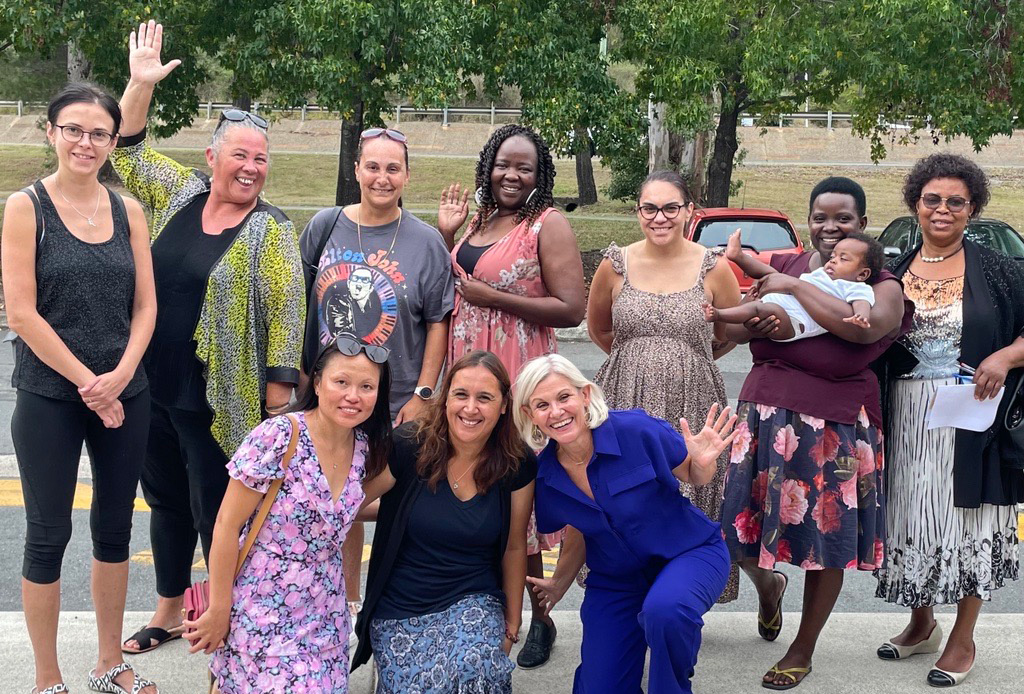
Prior to speaking with the CALD group, consultation with various health, settlement and refugee groups took place. The over-arching topic was “What are the special considerations an outdoor organisation may need to make when diversifying their participation base?”
Sadly, the common report was that many people of diverse cultures felt unsafe walking or attending outdoor spaces. They were often yelled at, racially abused and even attacked. What everyone wanted was safe places and respect.
The Logan Community hub was bubbling along busily, food was being prepped, children played, smiles, hugs and laughter created happy chaos.
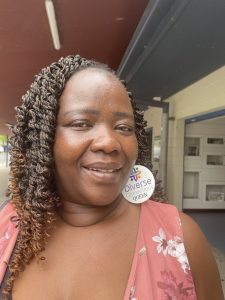 I meet Rose Karlo, a woman of presence. Rose is speaking to the women about settlement today. Her earrings are her business cards. Rose exudes intelligence, entrepreneurship and determination. I ponder that Rose is the person many an outdoor organisation need.
I meet Rose Karlo, a woman of presence. Rose is speaking to the women about settlement today. Her earrings are her business cards. Rose exudes intelligence, entrepreneurship and determination. I ponder that Rose is the person many an outdoor organisation need.
As we speak, Angela bounds along, her eyes and smile infectious, her energy endless. Angela Leo is the founder of Kicking it at Kingston. Her front yard has been turned in to a marketplace where people swap and gift everything imaginable. It has become a meeting place for the community, particularly for those new refugees that are still too afraid to face the shopping centres. At Angela’s they are not judged, their children are welcome. The sense of community is enormous. Angela exudes enthusiasm as she talks about her love for getting people outside, particularly for their mental health, stating “I’m always posting or messaging – let’s go down the creek or I’m over this dry weather, who’s coming around for a rain dance under the sprinkler! There’s always lots of smiles”. Angela’s front yard has become a place of welcoming, solace and safety, especially for those that are away from their homes, family, culture and loved ones. At one-point last week over 50 people visit her front yard. Angela answers the obvious questions about security. “We have 3 values: – that we share, we are responsible, and we respect the space and each other. We have never had an issue”.
 The room is full of women from all over the world. The clothing they wear is beautiful, reflective of their homeland, their culture. The first words of the meeting are an Acknowledgement of Country. It is heartfelt and said with gratitude. The rest of the women nod, this group understands the importance of culture.
The room is full of women from all over the world. The clothing they wear is beautiful, reflective of their homeland, their culture. The first words of the meeting are an Acknowledgement of Country. It is heartfelt and said with gratitude. The rest of the women nod, this group understands the importance of culture.
The session is a journey of hope, difficulties, sadness, anger, disappointment, cultural shock, loneliness and struggles regarding basic needs. One woman’s story is particularly harrowing, we feel the room sink. Fariha, a woman in a magnificent gold hijab who has been very quiet, steps in. What follows is one of the most inspiring speeches and calls to actions that I have heard. This is a woman who has risen through adversity, worked hard and smart. She has engaged others on her journey and empowered refugee women to become financially independent. Fariha paid for her children to attend university, owns her own business and home. If ever a sporting organisation needed a coach to inspire them, Fariha’s the person!
As I begin to speak about Outdoors for Life, I wonder how I will be received after such significant conversation. To my relief the women are animated as they talk about how much they love getting outdoors and the importance of the outdoors for their mental health. Their interest in what is available as an outdoor activity is as diverse as the cultures in the room. We talk about the cost of activities, what is available for free or low cost (two of the women have 8 children each). Hiking and exploring their surroundings is very much of interest. I address the concerns that had been raised regarding safety. Women of some cultures represented are regularly targeted with racist taunts and even physically threatened. We talked about forming a walking group that walks before or after the meeting. There is a lovely bushwalk along the creek at the community centre.
“Jenny” from Ukraine and Russia listens intently to her translating app. She is smiling as she translates our conversation. Jenny looks like a hiker, fit and in training clothes. We learn that she loves hiking and led a very active life where she lived on the border between Ukraine and Russia. Her family are split, living between the warring countries. Jenny excitedly sends messages talking about how important getting outdoors is. The new hike leader has been found!
The following week I check in with some of the women. I haven’t stopped thinking of them, they have inspired me to be better, do more, complain less. Proudly they tell me they have been walking together. Outdoors for Life has just taken on a much greater meaning.
By Fiona Coppin

Back to Outdoors for Life


